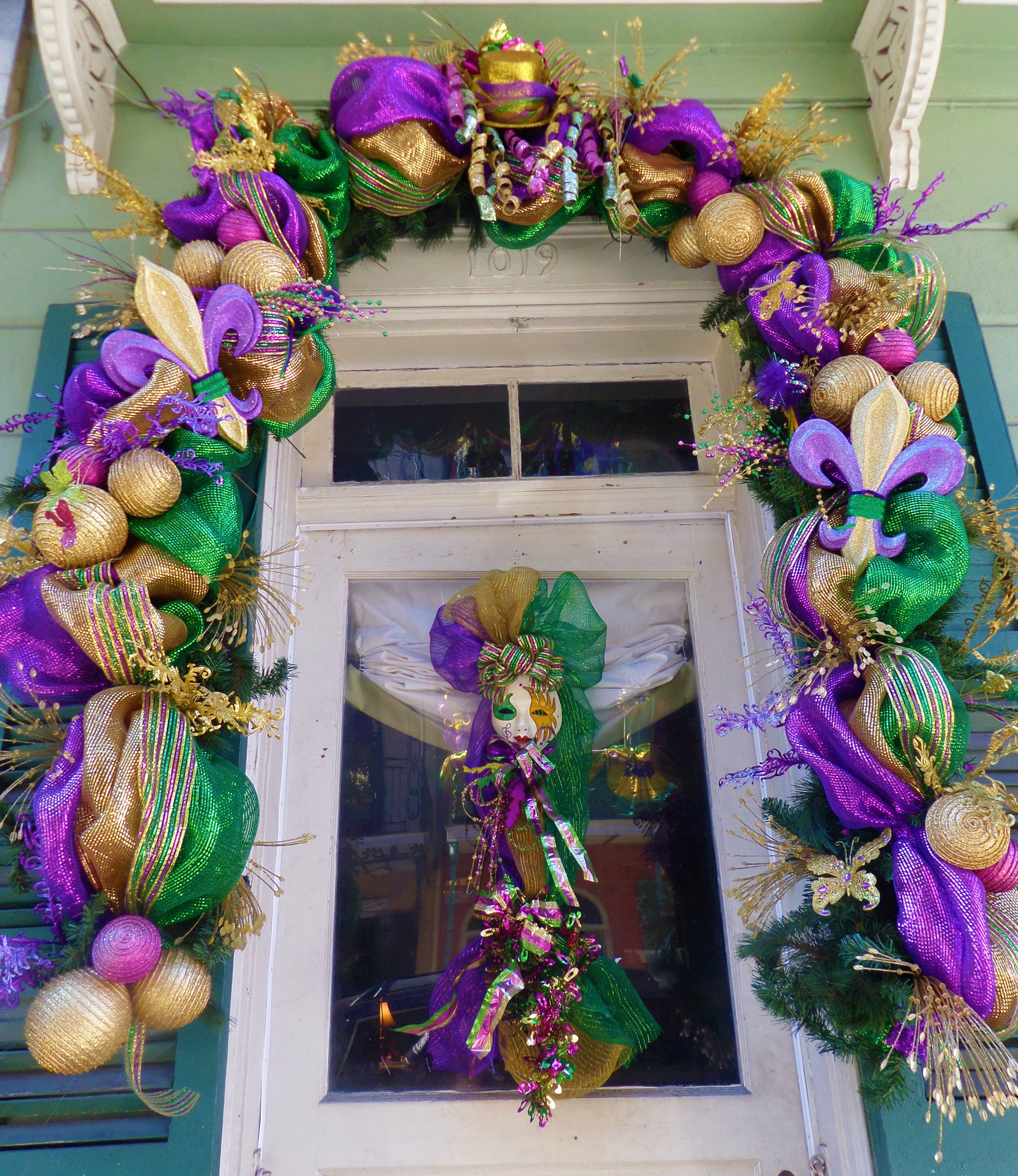
Almost 150 years ago, the Rex Organization was created to orchestrate a citywide Mardi Gras party to impress the grand duke of Russia, who was visiting during Carnival season, and to boost the city's tourism economy. The School of Design, which, to this day, is responsible for Rex's parade, branded Rex "King of Carnival." They published "proclamations" in newspapers to convince the entire city to drape their balconies with purple, green, and gold. Since then, those colors have come to symbolize New Orleans, in general, and our Mardi Gras, specifically, the world over.
No one is really sure why these colors were selected, although, to be on brand, they certainly would have to convey kingliness. Gold may seem like an obvious choice, but purple and green also have a long-established association with royalty and status. Why would particular colors be more associated with wealth, power, and stability than others? Some colors are rare in nature, and making color requires natural resources. As any painter or designer would tell you, wielding color is expensive. Purple and green require all three primary colors, which makes our Mardi Gras palette the epitome of opulence in itself.
Purple pigment from manganese and hematite powder first appeared in cave paintings between 18,000 and 27,000 years ago. However, it is Tyrian Purple dye that likely kickstarted purple's imperial reputation. The word purple itself is rooted in the Latin term purpura, for the mollusk that produces the color. It takes 10,000 to 250,000 snails to manufacture a single gram of Tyrian Purple. That's enough dye to tint a single sleeve, which, even today, will cost you over $2,700. Only the most elite royals accented their garments with, for example, stripes of purple—so, the bigger the stripe, the more powerful the person.
But beyond being costly, the actual color of Tyrian Purple dye is unpredictable. Ranging from indigos and blues to mauve, every batch is different. Manufacturing stable and safe pigments and dyes is no easy task, and both purple and green pigments have been particularly troublesome in the making. Ancient Egyptians used malachite to paint their god of fertility, rebirth, and the underworld, Osiris, green, but the pigment turned black over time. Ancient Romans discovered that they could soak copper plates in wine to create verdigris, but verdigris not only turns brown or black over time, but it is also toxic to the artisans producing it.
Wielding color, then, is costly in other ways. At the end of the 18th century, a chemist synthesized Scheele's Green, a bright green pigment made with the deadly poison arsenite. Legends of women being killed by poison in their dresses come from the real-life horrors of cloth being dyed with Scheele's Green. Wallpaper treated with the pigment made children sick, and some even believe it caused Napoleon's death. The first synthetic purple, Perkin's Mauve, also contained arsenic, as did Paris Green, which replaced Scheele's Green and is thought to have caused widespread illness among artists in the 19th century.

Thankfully, there are safer forms of pigment available today, so every person who lives in or visits New Orleans can don purple, green, and gold—or at least yellow gold. One of the oldest pigments wielded by humans is ochre. Ochres are non-toxic clay- and plant-based pigments, easy to make at home. It isn't precious gold metal, but yellow ochre, the color that appears on our contemporary Mardi Gras flags and t-shirts, that is associated with contemporary Carnival culture in New Orleans. The color of the imperishable sun and of pollen in spring flowers, yellow gold is associated more with seasonal renewal and divinity than ruling classes.
When paired with yellow gold as opposed to precious metal, purple and green take on other more obvious pagan and Catholic connotations. Egypt's god of the underworld, painted green, embodied the earth's ability to resurrect each year. Dionysus (Bacchus), god of purple wine and the green vine, dies and is resurrected each year as well—and it is the springtime rituals of Dionysian cults that evolved into Carnival. Corresponding with Easter, Mardi Gras, too, is a celebration of rebirth each spring, when the sun makes its awesome comeback, the earth blooms green, and, in New Orleans, giant irises (in a hue of Tyrian Purple) blossom once again.
Most locals will tell you that our Mardi Gras colors stand for justice, faith, and power (purple, green, and gold, respectively), but it is important to note that these colors were not picked because of their symbolic significance. It wasn't until 1892—50 years after the original branding event—that Rex rebranded Mardi Gras's palette with the parade theme "Symbolism of Colors." Symbolism aside, it was Impressionist artists—with their preferences for violet, marigold, and emerald—who made the palette wildly popular, both then and now.
Trends and symbolic associations may change, but our Mardi Gras brand of purple, green, and gold has only become more relevant to New Orleans's cultural identity. Purple, in particular, in the 20th century, became associated with civil rights and countercultural movements: Women's Suffrage in the early 1900s, the LGBT activists of Lavender Menace in the 1960s, and the psychedelic social, music, and artistic uprising of the 1960s and 1970s. Royalty and divinity, it seems, have less to do with riches and gold and more to do with being creatively fruitful and having the ability to bounce back. What better brand could possibly exist for New Orleans?

